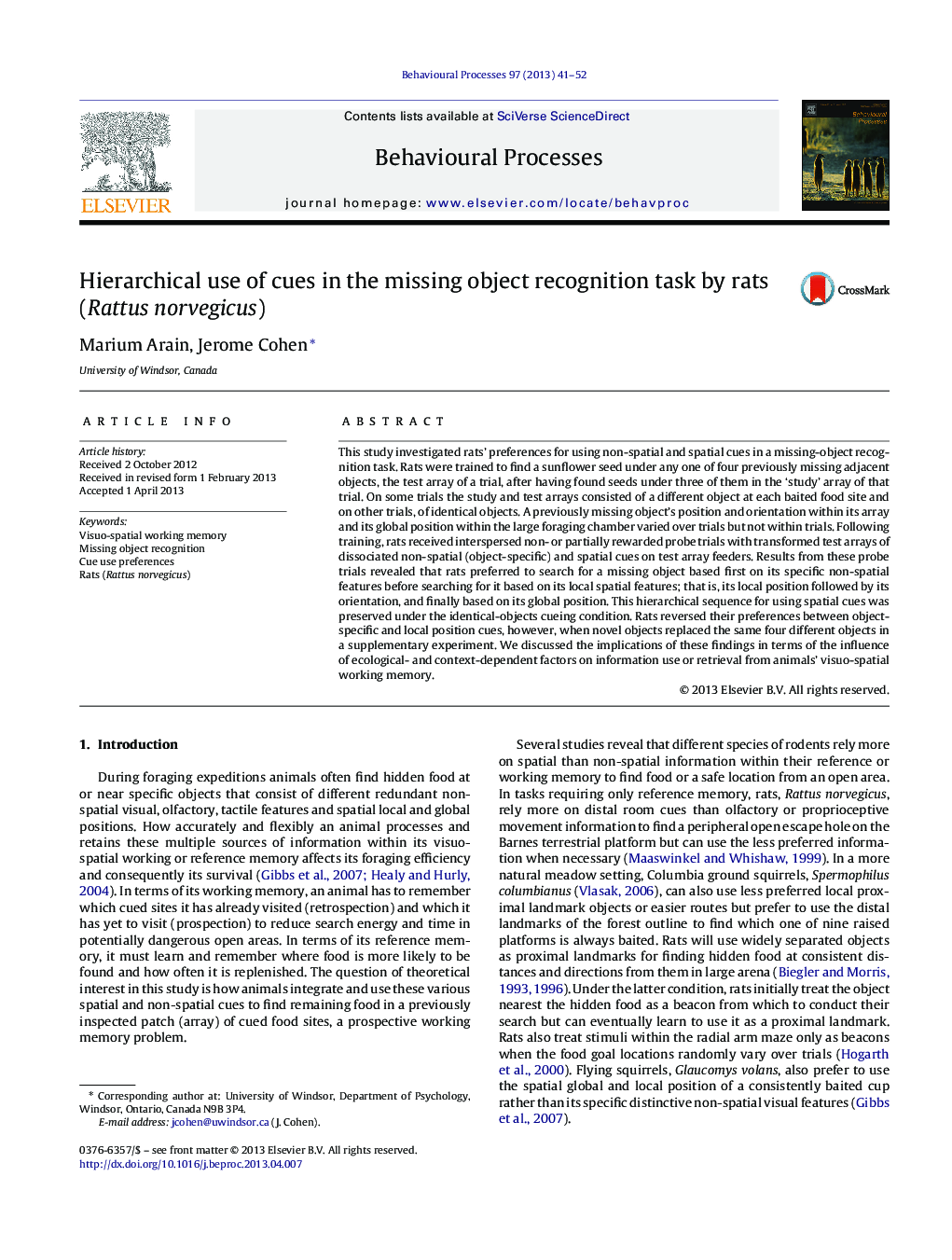| Article ID | Journal | Published Year | Pages | File Type |
|---|---|---|---|---|
| 2426889 | Behavioural Processes | 2013 | 12 Pages |
•Rats found a previously missing object among four different or identical objects.•Probe dissociated-cues trials assessed rats’ use of the missing object's cues.•Rats used missing objects’ non-spatial cues before its spatial cues.•Rats used missing objects’ different spatial cues a fixed sequence.•Rats used a missing novel object's local position before its non-spatial cues.
This study investigated rats’ preferences for using non-spatial and spatial cues in a missing-object recognition task. Rats were trained to find a sunflower seed under any one of four previously missing adjacent objects, the test array of a trial, after having found seeds under three of them in the ‘study’ array of that trial. On some trials the study and test arrays consisted of a different object at each baited food site and on other trials, of identical objects. A previously missing object's position and orientation within its array and its global position within the large foraging chamber varied over trials but not within trials. Following training, rats received interspersed non- or partially rewarded probe trials with transformed test arrays of dissociated non-spatial (object-specific) and spatial cues on test array feeders. Results from these probe trials revealed that rats preferred to search for a missing object based first on its specific non-spatial features before searching for it based on its local spatial features; that is, its local position followed by its orientation, and finally based on its global position. This hierarchical sequence for using spatial cues was preserved under the identical-objects cueing condition. Rats reversed their preferences between object-specific and local position cues, however, when novel objects replaced the same four different objects in a supplementary experiment. We discussed the implications of these findings in terms of the influence of ecological- and context-dependent factors on information use or retrieval from animals’ visuo-spatial working memory.
